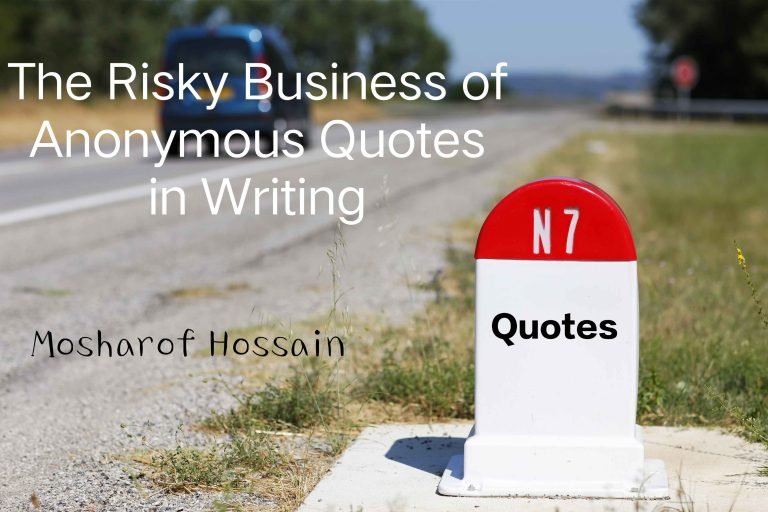Quotes are powerful tools in writing, lending weight, insight, and authority to our words. But what about anonymous quotes? Those elusive, nameless snippets of wisdom or perspective that can be both intriguing and precarious to wield in my content.
The Allure of Anonymity
Anonymous quotes possess an undeniable allure. They often carry a sense of mystery, offering wisdom or opinion without the burden of a known identity. This veil of secrecy can be enticing, seemingly granting freedom to express thoughts that might otherwise be constrained.
The Temptation of Anonymity
In today’s digital age, anonymous quotes find a comfortable home in blogs, articles, and social media. They add flavor, emotion, and diversity of thought to narratives. However, they can be a double-edged sword, presenting significant risks for both writers and readers.
The Risky Path
The foremost risk lies in credibility. Without a verifiable source, the authenticity and accuracy of the quote are questionable. Readers might question the legitimacy of the information, eroding trust in the content and its author.
Moreover, the absence of attribution can lead to misuse or misinterpretation. Anonymity shields responsibility, potentially encouraging the spread of misinformation or inappropriate content.
Navigating the Terrain
So, how can one navigate this treacherous terrain?
1. Context is Key: Provide context around the anonymous quote. Explain why anonymity was necessary or how it enhances the narrative.
2. Verification and Vetting: If possible, verify the quote’s authenticity through multiple reputable sources. Even without a name, cross-referencing can lend credibility.
3. Use Sparingly: Employ anonymous quotes sparingly. Reserve them for instances where their impact significantly outweighs the risk to credibility.
4. Transparency and Honesty: Be transparent with your readers. Acknowledge the limitations of using anonymous quotes and explain your decision-making process.
Conclusion:
Anonymous quotes carry a magnetic pull, adding depth and mystery to content. However, their use comes with inherent risks. As writers, it’s our responsibility to weigh these risks against their potential benefits and to tread carefully, prioritizing accuracy, transparency, and the trust of our audience above all else.






